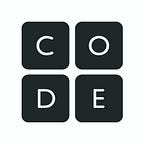Measuring coding skills in grades K-8
In the 3 years since we launched our Code Studio coding platform, it’s become the most broadly used coding platform and computer science curriculum in K-12, reaching 10% of all students worldwide. Of course, millions of these students are “drive-by” users, coding for just an hour or two. What matters more to us is how many teachers incorporate our lessons meaningfully into their classrooms, and what their students learn.
Instead of measuring logins or page-views, we attempted to measure student coding skill. Because there is no standard measure of this in grades K-8, last year we embarked on creating our own metric based on the coding concepts covered in our puzzles and their level of difficulty. We began counting students who demonstrate “coding proficiency” in our CS Fundamentals course using a definition which we created based on student success at coding challenges.
This is our first stab at measuring student “coding proficiency,” and we still have a lot of work to improve on the metric. We’ve documented in great detail how we came up with this measure, as well as the many ways we hope to improve on it in the future. Read the report.
The chart below shows how many students demonstrated coding proficiency at different difficulty levels. In calendar year 2016, almost 900,000 students reached what we’re calling “basic coding proficiency” (difficulty level 3).
We’re excited to have a way to measure student coding skill, and we also have a long way to go to improve on the definition. We’ll continue to share updates as we progress on refining this metric, and we’d love feedback on our approach.
Baker Franke, Curriculum Development Manager for Code.org
